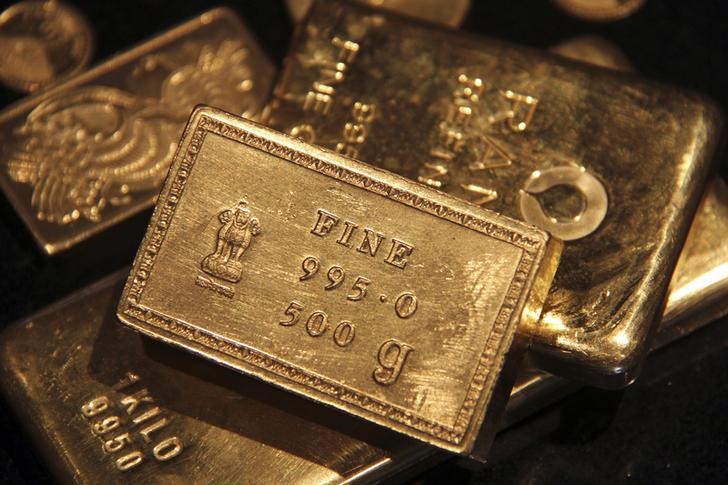By Geoffrey Smith
Investing.com -- Gold prices fell on Monday on a day when the usual inverse correlation between haven and risk assets again broke down.
The only beneficiary of the widespread increase in risk-off sentiment was the dollar, whose 0.3% added to any downward pressure on metals.
By 11:30 AM ET (1530 GMT), gold futures for delivery on the Comex exchange were down 0.9% at $1,699.20 a troy ounce, while spot gold was down 0.3% at $1,697.20.
Silver futures were down 1.0% at $15.62 an ounce, while platinum futures were down 1.3% at $779.45.
The day was marked by concerns that risk assets may have gotten ahead of themselves in pricing in a so-called ‘V-shaped’ recovery, that is, a rapid bounce from the economic downturn that is widely expected to bottom in the second quarter.
“There is a distinct possibility that the exit process is not smooth, but determined by how the virus data react to the lifting of restrictions,” ABN AMRO (AS:ABNd) analysts led by Nick Kounis wrote in a daily note to clients. “Deteriorations in the virus data could lead to a pause in the process of lifting restrictions or even a re-introduction of some measures. The risks seem highest where the political pressure to open up appears to be running ahead of the improvements needed in the virus data that would justify an exit.”
They added that this is most notably the case in certain U.S. states, but warned that European governments face the same challenge. Only China, they argued, is set for a "best case” recovery.
Gold prices had been supported last week by market signals suggesting that U.S. official interest rates could turn negative next year as the Fed is forced to resort to ever-more dramatic measures to support the economy. Chairman Jerome Powell and others have expressed opposition to negative rates in the past. Two senior Fed officials – Atlanta Fed President Raphael Bostic and Chicago counterpart Charles Evans – may both touch on the subject when they speak later Monday.
Late on Friday, Commodity Future Trading Commission data had suggested that the flow of hot money into gold was easing off: net long positions stabilized at around their lowest levels since August, while net longs in silver hit their lowest since July. Physical demand from traditional buyers, such as Indian retail, has slumped howeve in response to high prices and the weakening of the rupee. World Gold Council data suggest imports fell 50% from a year ago in the first quarter, while Chinese imports fell by 62%.
Those buyers are being squeezed out of the market by a wave of U.S. investor money. The WGC's chief market strategist John Reade noted that 80 ETFs tracked by the WGC had bought the equivalent of 51 tons of gold so far in May alone.
